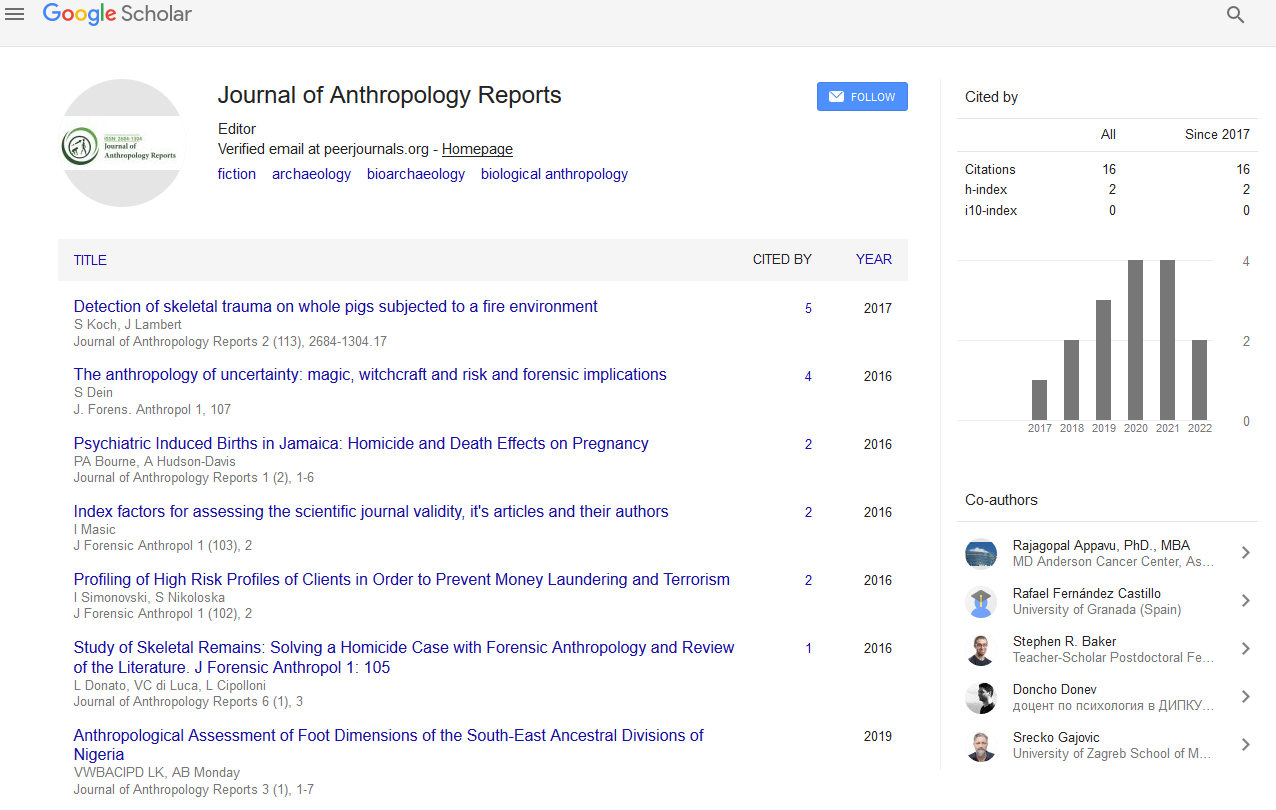Indexed In
- RefSeek
- Hamdard University
- EBSCO A-Z
Useful Links
Share This Page
Journal Flyer

Open Access Journals
- Agri and Aquaculture
- Biochemistry
- Bioinformatics & Systems Biology
- Business & Management
- Chemistry
- Clinical Sciences
- Engineering
- Food & Nutrition
- General Science
- Genetics & Molecular Biology
- Immunology & Microbiology
- Medical Sciences
- Neuroscience & Psychology
- Nursing & Health Care
- Pharmaceutical Sciences
Abstract
Psychiatrists and Forensic Psychology 2016: The resilience of personality disorders: The possible change through an integrated approach-Barbara Sartini-UniversitÓ Cattolica del Sacro Cuore of Medicine
Barbara Sartini
Personality disorders are examined in 40 - 60% of psychiatric patients. Those with personality disorder manifested great problems in interpersonal relationships, unstable self-image, marked impulsitivity and so in dealing with everyday life. Although the causes of the disarray are multifactorial, mainly, the common factors concern:
EID Emotional intensity disorder Hypersensitivity to life events, Hyper emotional reactivity,Slow return to a baseline psychic equilibrium.
The fetish is the alter of these types of personalities (EID personalities), so emotionally vulnerable, to resilient personalities. Resilience is the ability to handle effectively to everyday problems, in spite of the past life’s unfavorable and traumatic events. Research has shown that flexibility is ordinary, not extraordinary. People commonly reveal resilience. It is not a feature, that is present or absent in the individual, but, instead, refers to behaviors, thoughts and actions that can be erudite by anyone. The old symbol applies: flexible people are like bamboo in a hurricane they bend rather than break. Or, even if they feel like they’re broken for a time, there’s still a part of them bottomless inside that knows they won’t be broken forever. Here’s how they do it...
The toughness personality:
The ability to make rational plans and take steps to carry them out. A positive sight of yourself and confidence in your strengths and abilities. Keep high-quality and supportive relationships. Have a menu of self-care habits. (They have a mental list of high-quality habits that support them when they need it most.) Skills in communication and problem solving. The capacity to supervise strong feelings and impulses.In my job, I have been able to monitor and verify how the socio therapy approach in the therapeutic community (Maxwell Jones’model) integrated with the STEPPS’s training (Nancy Bloom) can develop flexible personalities.
The sociotherapy:
Introduces novel potential for action entrusted to the patients themselves, Highlights a number of strategy for the treatment and the growth of the “healthy” part of the individual problematic. Certainly the most important event of this definition dates back to the“Therapeutic Community” by Maxwell Jones (England,1940). It was based on a condition of ideal equality of the hospital institution’s members. The patient has an active role in the treatment. It promote a continuous and dynamic relationship between individuals and between the individual and the community.Sociotherapy’s features and strategies
Safety (Rules, agenda of groups and activities) Empowerment (make decisions) Living learning (improve yourself doing experience day by day) sympathy (support and share emotions) Democracy (role blurring) Communalism (share daily activities) Culture of enquiry (confront about each behavior)
Stepps program
The Iowa agenda began in 1995, based on a systems method to treating individuals with Borderline Personality Disorder (BPD), originally developed by Bartels and Crotty (1992). That program was afterward adapted and revised by Blum, St. John, and Pfohl (2002), and has been further revised for this second edition.
The present program includes two phases: a 20-week basic skills group, and a one year, twice monthly advanced group program called STAIRWAYS.
The basic format consists of 3 phases:
Awareness of illness Emotion Management Skills Training Behavior Management Skills Training
This therapeutic and riabilitative integration allows to increase in the patients those skills necessary to resume positively the control of their lives, doing the individual experiences as:
relationships with caring and supportive people, taking positions of responsibility (sociotherapy), awareness of their strengths and weaknesses Learning of emotional organizational skills and problem solving (STEPPS).Personality disorders are a diagnostic category of psychiatric disorders that affect approximately 10% of the population (Torgersen, 2005). Since everyone has a personality, but not everyone has a traits disorder, these disorders are careful a variant form of normal, healthy personality. This group of disorder is characterized by difficult thinking patterns; problems with emotional regulation; and difficulty achieving a balance between spontaneity and impulse control. However, the majority significant and defining feature of personality disorders is the negative effect these disorders have on interpersonal relationships. People with traits disorders be apt to respond to differing situations and demands with a characteristically rigid collection of thoughts, feelings, and behavior. This rigidity and complexity forming nuanced responses, represents the main difference between healthy and disordered personalities.
The diagnosis of personality disorder is often very complex as these disorder frequently co-occur with each other and with other psychiatric categories of disorders. The present diagnostic system of the DSM-5 (APA, 2013) relies upon a categorical approach. An alternative to the categorical diagnostic approach, called a dimensional approach, was presented and discussed. Both methods were compared and contrasted.
The exact cause of personality disorders remains uncertain. However, it is clear there are both biological and, psychosocial factors that control the development of personality and personality disorders. Several psychological theory of personality disorder effort to explain the psychosocial origins of personality disorders. The following psychological theory of personality disorder were reviewed: object relations theory, attachment theory (including mentalization), and cognitive-behavioral theory (including dialectical behavior theory and schema theory). In addition to these exact theories of personality disorder, the Structural Analysis of Social Behavior (SASB) that codes social connections was discussed as it applies to understanding character disorders. The contributions of neuroscience were discussed as well.
This is no longer the case. There are now quite a few highly effective treatments for personality disorders that derive from the same psychological theories previously reviewed. In conclusion, current technological advancements and improvements to diagnostic methodologies have enabled researchers to study personality and personality disorders as never before. As a result, we now have a much greater understanding of these disorders. Furthermore, this research has facilitated the development of several highly effective treatments for personality disorders that are evidenced-based. As research continues, these treatment approaches will be further refined. Therefore, we can state with confidence there is hope and relief for people affected by these disorders, including their family members and loved ones.
This work is partly presented at 4th Global Euro Conference Psychiatrists and Forensic Psychology November 10-11, 2016 Alicante, Spain
Published Date: 2020-07-30;

